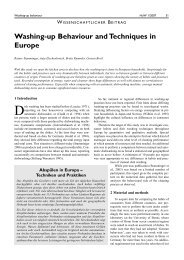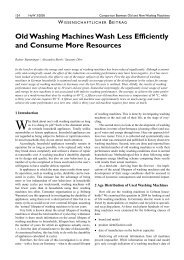Development of a novel mechatronic system for mechanical weed ...
Development of a novel mechatronic system for mechanical weed ...
Development of a novel mechatronic system for mechanical weed ...
You also want an ePaper? Increase the reach of your titles
YUMPU automatically turns print PDFs into web optimized ePapers that Google loves.
State <strong>of</strong> the art<br />
detection <strong>of</strong> certain geometric differences between the crop and <strong>weed</strong> species,<br />
or differences in spectral reflectance.<br />
It has been confirmed that discrimination between monocots and dicots is<br />
possible using shape feature analysis (Woebbecke et al. 1995). However it has<br />
been stated that <strong>weed</strong> detection based on texture (leaf shape) analysis could<br />
become fairly complicated, because <strong>of</strong> a wide spectrum <strong>of</strong> different leaf shapes<br />
<strong>of</strong> various species (Guyer et al. 1986). Particular problems are the unfavourable<br />
conditions which can occur on the field:<br />
� overlapping <strong>of</strong> the leaves;<br />
� leaf orientation in relation to the plane in which the trans<strong>for</strong>mation <strong>of</strong><br />
the 3 dimensional space to 2 dimensional image has been done;<br />
� variation <strong>of</strong> the distance between the camera and the target plant,<br />
causing changes in field <strong>of</strong> view and focusing and<br />
� trans<strong>for</strong>mation <strong>of</strong> the leaf boundaries in images in reference to the<br />
model due to their movement in the wind.<br />
On the other hand, colour characteristics <strong>of</strong> plants <strong>of</strong>ten provide sufficient<br />
in<strong>for</strong>mation <strong>for</strong> distinction between different species, impose fewer restrictions<br />
on leaf overlap, leaf orientation, camera position and camera focusing. A study<br />
<strong>of</strong> <strong>weed</strong> detection based on the differences in the stem colour, detecting<br />
species with stems colours ranging from reddish to purplish (El-Faki et al. 2000)<br />
has proved the potentials <strong>of</strong> the colour approach. Low processing speed,<br />
hardware requirements and dependence on variable conditions in the field can<br />
be generally designated as bottlenecks <strong>of</strong> machine vision <strong>system</strong>s.<br />
Several groups have measured the spectral reflectance <strong>of</strong> crops and <strong>weed</strong><br />
species to evaluate the possibility <strong>of</strong> crop/<strong>weed</strong> discrimination based on<br />
different spectral reflectance (Franz et al. 1995; Zwiggelaar 1998). The<br />
advantage <strong>of</strong> using spectral reflectance <strong>for</strong> plant/<strong>weed</strong> detection is the fast data<br />
processing. However, differences in spectral characteristics are not always<br />
large and robust enough <strong>for</strong> unique decision (Clausen et al. 2000). A review <strong>of</strong><br />
the use <strong>of</strong> spectral properties <strong>for</strong> <strong>weed</strong> detection and identification has been<br />
written by Noble (Noble and Crowe 2002).<br />
27





